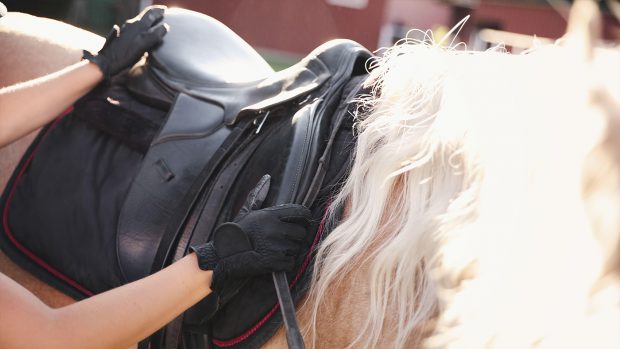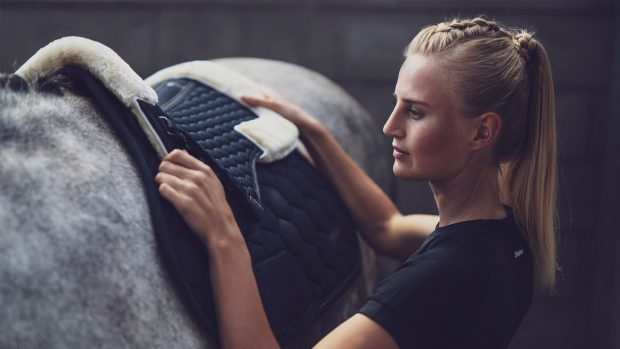Most horse owners spend hours finding the perfect saddle for their horse, but few spend much time thinking about the right girth.
However, it is important to choose one carefully as a strong, good quality girth could save your life, as well as preventing painful problems for your horse, like girth galls.
Girths are now available in a wide range of materials, including neoprene, synthetic, cotton, string and leather, with or without elastic inserts.
Natural fibre has proved its worth over many years and some individuals prefer to keep “skin on skin”. However, some synthetic girths have been designed wick away sweat, or absorb moisture from the horse’s skin.
Some girths have elastic at one or both ends. The elastic is believed to allow the girth to following the movement of the ribcage making it more comfortable for the horse. However, some argue that a girth with elastic at one end distorts the pressure across the girth, while others claim elastic at both ends encourages people to girth up too tightly. It is really down to personal preference.
Like all equipment for both horse and rider, types of girth come in and out of fashion. Don’t be influenced by trends – think about what you need the girth for and weigh this up against how much you are prepared to pay.
Girths vary in price from around £10 to £300 and it can be difficult to spot the difference at first glance. You will pay more for stainless steel buckles, high quality stitching and a more durable material. English leather is at the top of the price scale, while synthetic fibres tend to be cheaper.
For Q&As on a range of horse care subjects including tack, see the November issue of HORSE magazine, or click here to subscribe.




